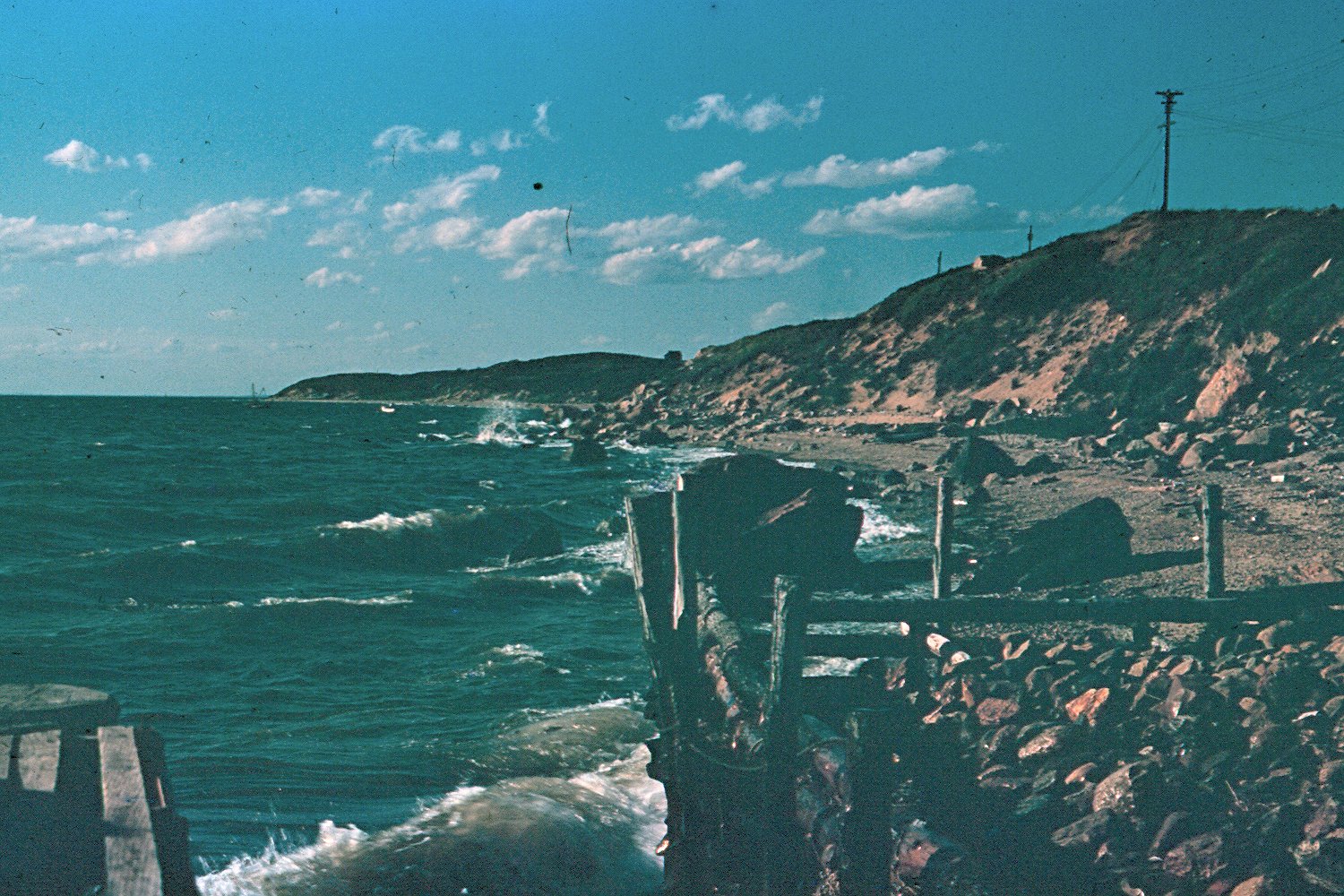What did Fort Pond Bay look like before a village was established at the harbor’s center? Even the earliest photographs we have of Rough Riders arriving in ships show buildings and houses already established in the area. This Kodachrome slide of Fort Pond Bay looking north toward Culloden Point was taken by Harry Bruno in 1945. It offers an approximation of the raw, desolate scenery that a group of yachtsmen who sought shelter here encountered in 1875. Their description of a “bleak and barren” landscape was underscored by descriptions of Montauk’s notorious wind, which seemed to increase in severity as their stay in Fort Pond Bay continued.
The Mount Vernon Chronicle ran three articles in July and August 1875 about this “band of 12 gentlemen, a jolly party [who] expect to have a jolly time” on a weeklong cruise sailing the Long Island Sound. With an eye and ear for detail, the author (probably Joseph Wood, the Chronicle’s editor) wrote engagingly about the expedition, allowing readers to experience every accomplishment and setback employed by Mother Nature. It was smooth sailing until a storm raged into Gardiner’s Bay. The crew fought for their lives, barely maneuvering the Corinne into the natural harbor on Montauk’s north side.
“At three o’clock we entered Fort Pond Bay, and there heaved anchor. Shortly after anchoring the rain ceased, and the clouds broke, but the wind blew straight into our harbor, and as fiercely as ever.” The Corinne pitched and tossed wildly, forcing the decision to stay overnight. The shoreline was desolate, with no fishing lean-tos or shacks. However, a chance to explore on foot was taken by most of the 12. As they crawled out of their yacht they encountered their welcoming committee, the sheep. “It was amusing to see the old rams come forward as a corps of observation, the rest of the flock standing still, and intently staring at us.” Passing muster, the explorers were allowed to walk by Second House and soon arrived on the Atlantic shore.
After viewing the ocean in wonderment, they returned to the Corinne at sunset, where “dismay filled our breasts. The wind blew more fiercely than ever, and that too straight into our harbor.” The crew had a terrible time righting the Corinne. “The way in which our yacht pitched and tossed is too powerfully photographed on our mind ever to be effaced.” They fought to get the yawl off-shore, but the Corinne took on so much water that she had to be beached and turned over. Finally crawling into their bunks, this formerly “jolly crew” was rocked and pitched all night. Even worse, the next day upon departure the Corinne smashed into poles that had been set by early-morning fishermen, breaking her jib-stay.
In New London it was repaired, as were the crew’s spirits, buoyed high after an evening of singing and partying “in a harbor which is all life and animation.” By the end of the week, the bad memories of Fort Pond Bay had morphed into the group’s own version of a Greek odyssey. No longer were they “the 12 gentlemen.” Per Joseph Wood, they were now called “the 12 Argonauts.”


Reply or Comment